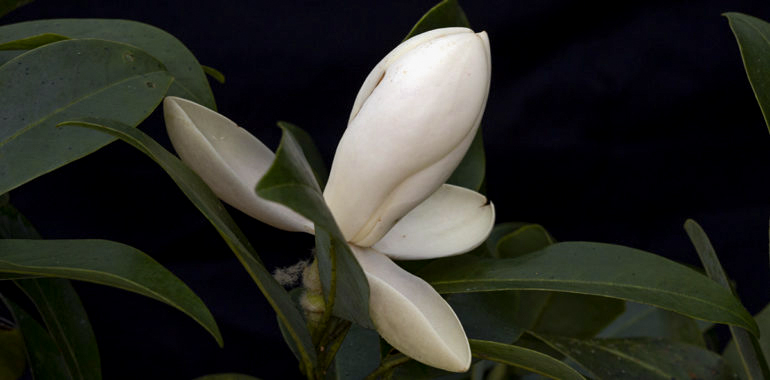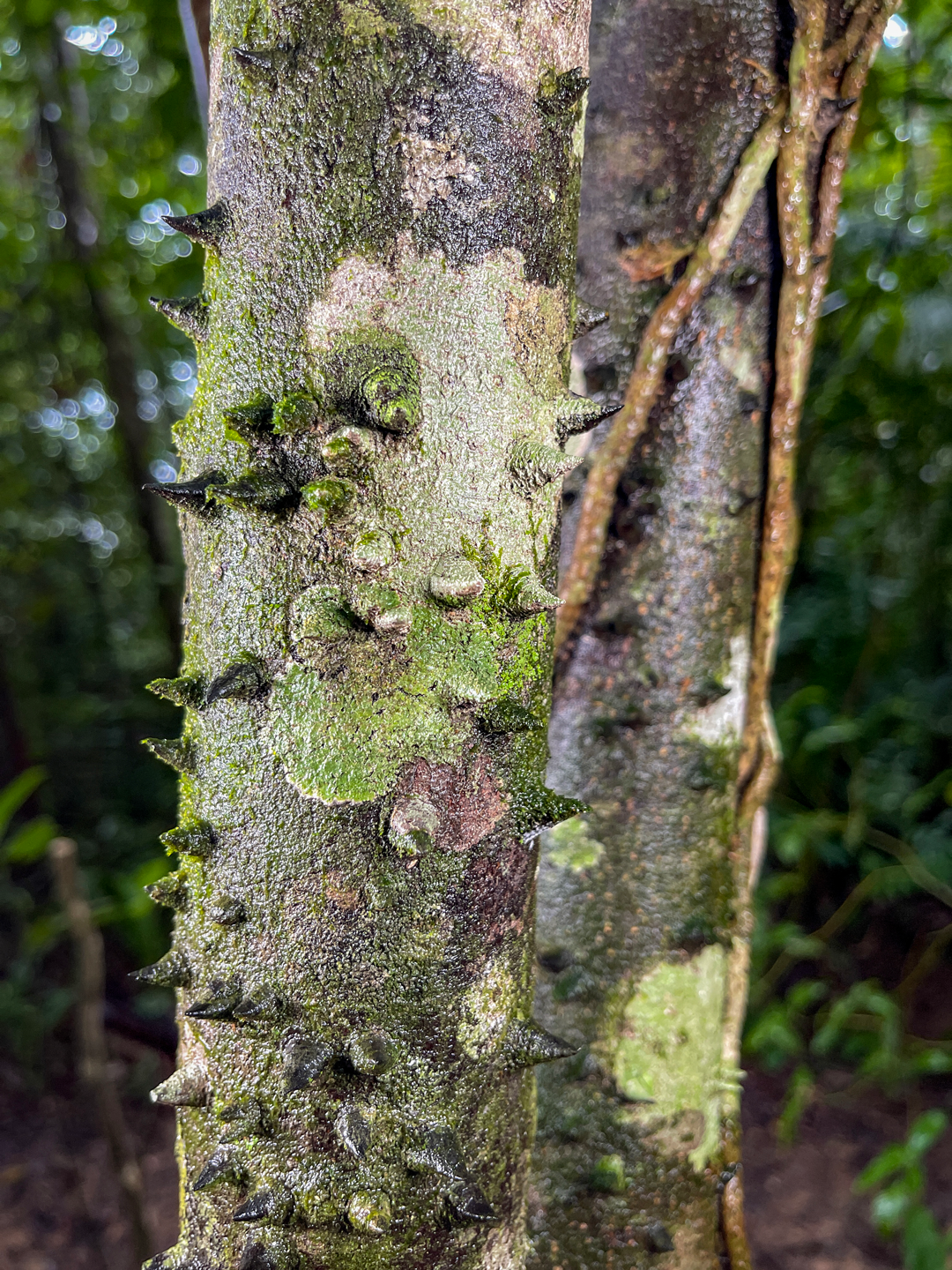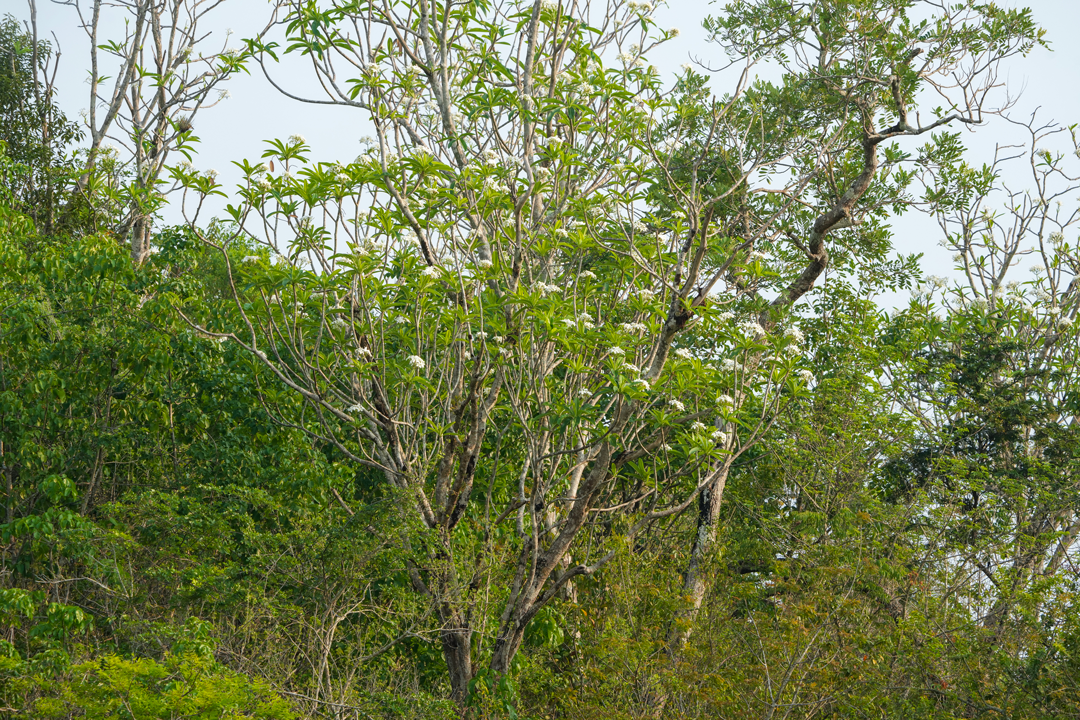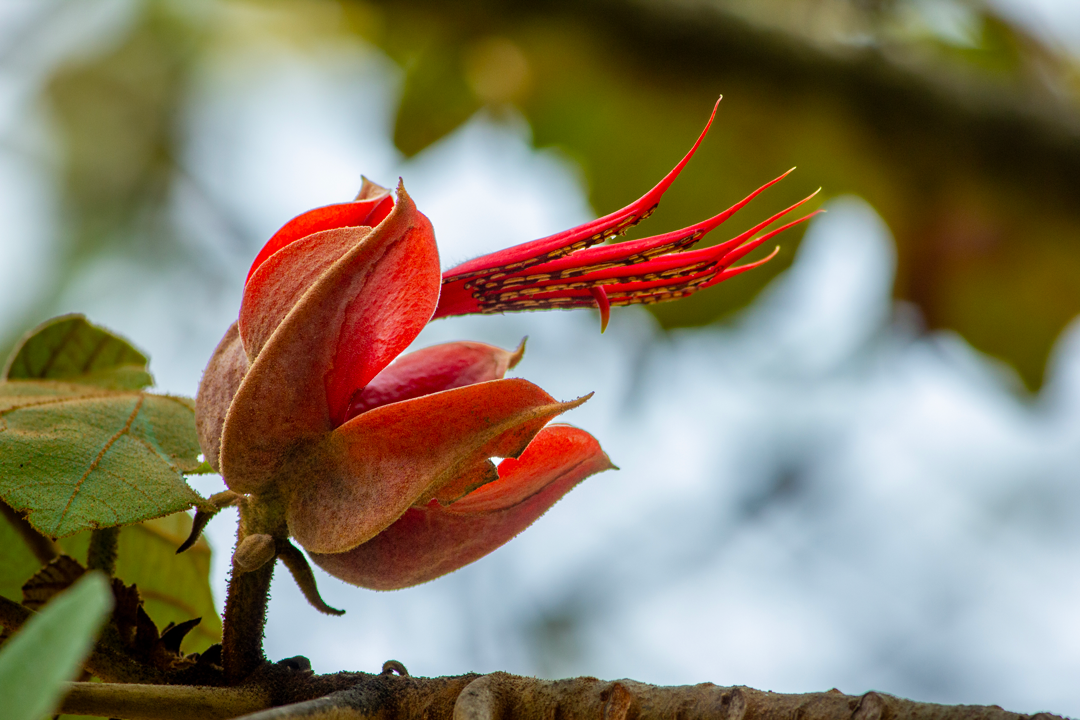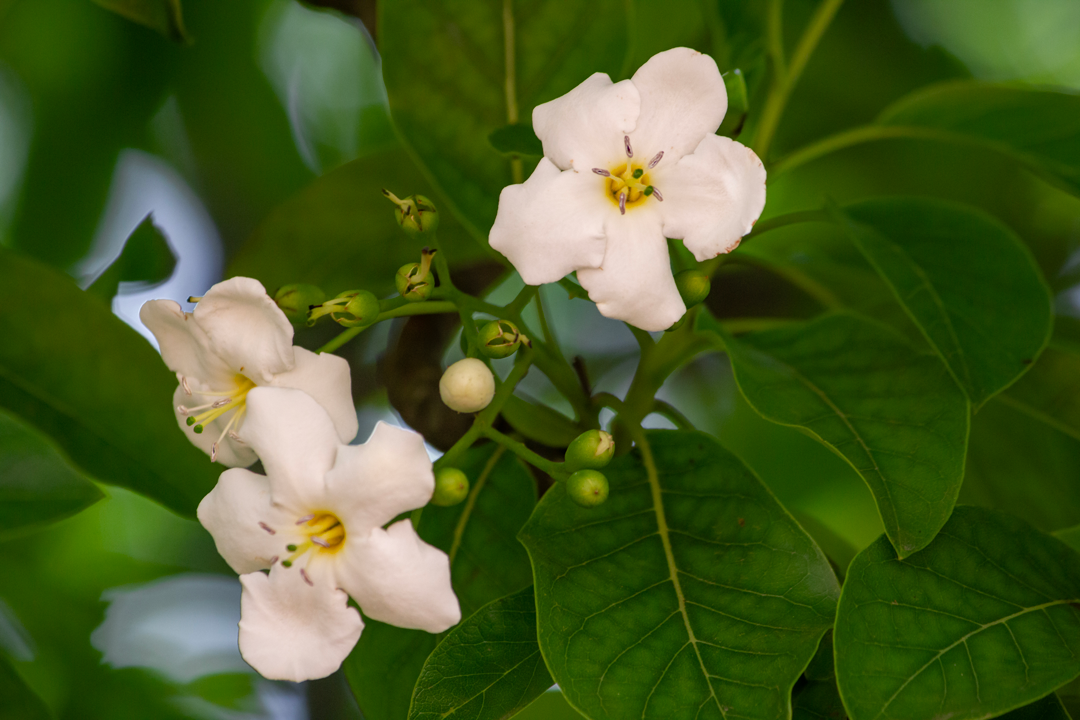Dr. Nicholas Hellmuth showing a plant of junco (Carludovica palmata) in the FLAAR Mesoamérica ethnobotanical garden. Photo by Vivian Hurtado. July 5, 2024.
On Friday, July 5th 2024, we were honored to give a tour through our ethnobotanical garden to a special group of visitors conformed by experienced chemists and pharmacists. One of our guests was Armando Cáceres, who was recently awarded by the Guatemalan government with the Order of the Quetzal (the highest decoration awarded in Guatemala) for his contributions to science and pharmacology. He has also been a long time friend and colleague to Dr. Nicholas Hellmuth. We were also honored to receive Dr. Ikhlas Khan and Dr. Salvador Cañigueral, both of whom have a long and distinguished career in the study of natural medicinal products and their properties.
Dr. Nicholas Hellmuth got to start the tour by showing the flowers of Aristolochia grandiflora and their interesting pollination method, which never fails to spark curiosity and awe our visitors. Everytime the flowers are cut open by Dr. Nicholas or another member of our team, it's always quite a spectacle to watch tens of flies and other insects that were trapped inside the flowers getting out. However, this time it was also nice to start the tour with Aristolochia grandiflora since it has been a species used for its medicinal properties by local people.
Dr. Nicholas Hellmuth showing and cutting some flowers of A. grandiflora from the FLAAR Mesoamérica ethnobotanical garden. Photo by Vivian Hurtado. July 5, 2024.
Other plants from our garden that were highlighted on the tour for their medicinal use or cultural relevance where Piper umbellatum, Cestrum nocturnum, Hamelia patens, Tagetes sp., Plumeria rubra, Tradescantia zebrina, Ceiba pentandra, and of course our cacao tree (Theobroma cacao).
Some of our visitors on July 5 during our introductory lecture to FLAAR Mesoamérica and medicinal plants documented by our team in recent years.
We also prepared a brief lecture to introduce our visitors to the work of FLAAR Mesoamérica and to some of the plants that we have documented in the last few years which hold potential for their medicinal properties. Some of them have been barely studied in this regard. Among such species, we showcased the following:
Magnolia spp. There are many magnolia trees which are endemic to Guatemala and that are currently endangered. However, exploring the use of their fragrant flowers could help to build a strategy or path to protect them.
Magnolia mayae, Huehuetenango. July 2014. Nicholas Hellmuth.
Lacmellea standleyi. The lechemiel tree (the tree of honey milk) exudes a tasty edible latex. The medicinal properties of the fruits of a close relative that can be found in South América have been studied in other countries, however much more research is still necessary for this local species.
Lacmellea standleyi documented in Cerro San Gil, Izabal. Photo by Nicholas Hellmuth. Jan. 30, 2021.
Plumeria rubra. Many people don’t know that this is a native species to Guatemala. Although it is broadly used for medicine in other countries, the properties of the local variety have probably never been studied.
A wild tree of Plumeria rubra in Santa Elena Petén. Photo by Edwin Solares. May 17, 2023.
Chiranthodendron pentadactylon. This tree is native to the mountain forests of the volcanic chain of Guatemala and has medicinal properties that are still to be explored.
Flower of Chiranthodendron pentadactylon. FLAAR Mesoamérica archive.
Bourreria spp. The infamous árbol del hermano Pedro, as it is locally known has been used for its properties since Pre Columbian times.
Bourreria huanita flowers in Antigua Guatemala. Photo by Nicholas Hellmuth. May 2012.
To continue exploring and documenting the biodiversity of Guatemala could broaden the possibilities to make a sustainable use of the natural resources. For instance, exploring the medicinal properties of wild flora species could help preserve them. In that sense, we were happy to receive this group of visitors in our garden and hope to receive them again in the future.
Posted July 12, 2024
Written by Sergio D’angelo Jerez





